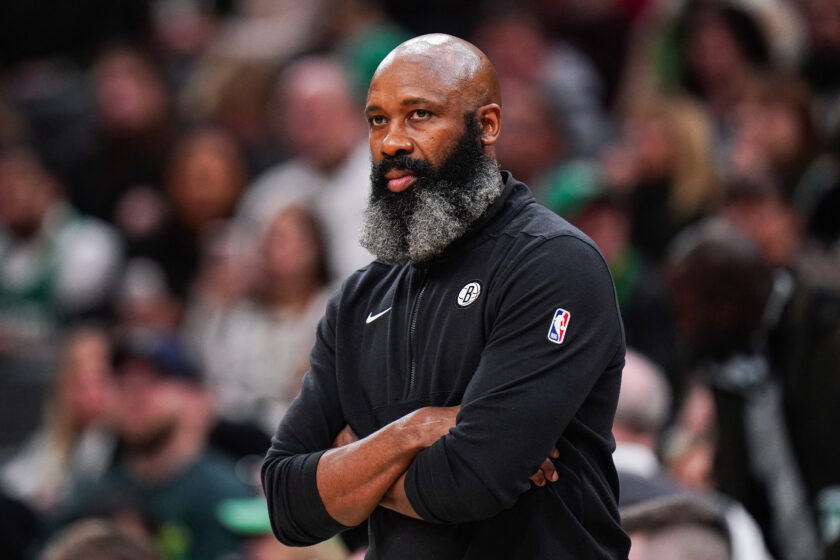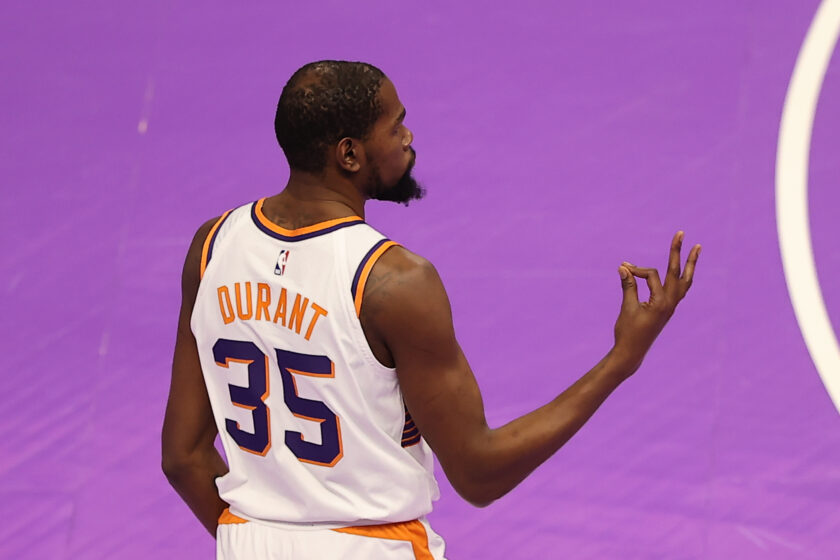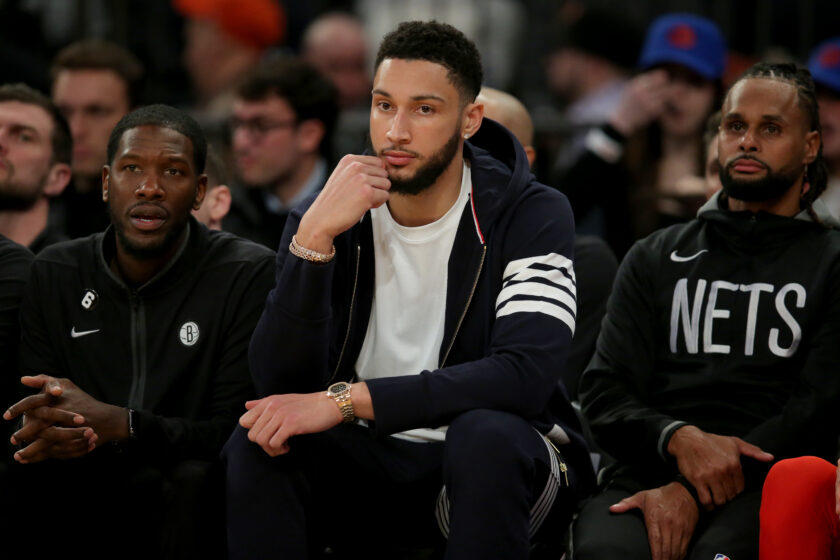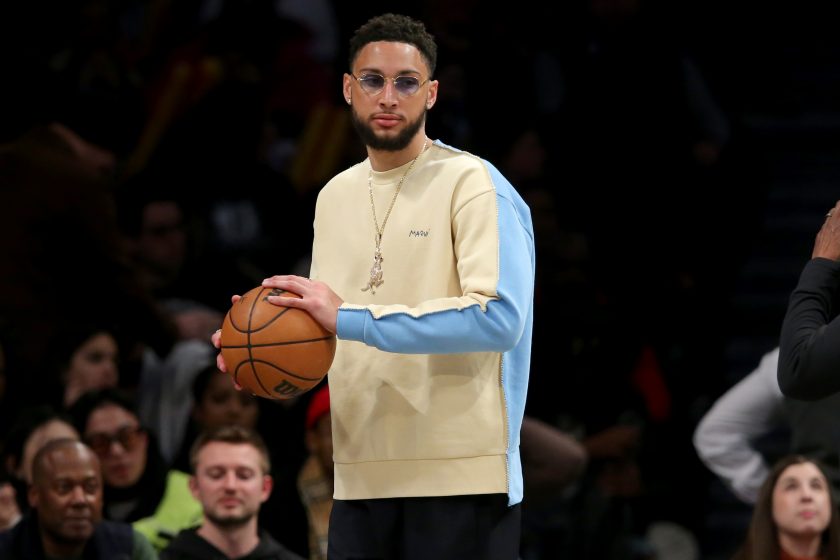Brooklyn Nets strategy: An inside look at Kenny Atkinson’s zone defense

Coach Kenny Atkinson has been doing something unique with the Brooklyn Nets defense … and it might be working.
The Brooklyn Nets like to stay cutting-edge.
Brooklyn takes pride in its use of the analytics. Every move has been done under the umbrella of the utmost efficiency.
Their offense is a Daryl Morey wet dream: it’s predicated upon the pick-and-roll as well as high-volume three-point shooting. They run a majority of their offense through their guards. Their offense is so futuristic that Brooklyn’s most important player might be a spot-up shooter.
Brooklyn has become a factory of sorts, using numbers as building blocks to spit out a winning product on an assembly line.
However, throughout the Kenny Atkinson era, defense has never been a strength.
Atkinson was hired back in April of 2016. Since his hiring, the Nets have been a below-average defensive team. In his first season, Brooklyn ranked 23rd out thirty teams in defensive rating. The second season didn’t go much better. Brooklyn jumped ever so slightly to the 21st spot.
A lot of this can be attributed to Brooklyn’s, um, let’s just say … below average cast of players. Guys like Jeremy Lin, Yogi Ferrell, Randy Foye, Luis Scola, Anthony Bennett, Jahlil Okafor, and Trevor Booker weren’t exactly known as ball-stoppers.
Kenny Atkinson has never been afraid to try things. With a subpar cast on the floor, the young coach took the liberty to test schemes out.
Back in November of 2017, the Brooklyn Nets were getting throttled by the eventual one-seed, the Houston Rockets. Brooklyn’s defense was particularly porous that night, allowing a whopping 41 points in the first quarter.
Then, something changed. Brooklyn began utilizing the seldom-used zone. And you know what? It kind of worked. The Nets slowly chipped away at the Rockets’ lead, widdling the deficit down to four points. (Eventually, they lost 117-103).
Since then, Atkinson has continued to apply this defensive system, exercising it against specific teams and lineups.
[sc name=”Nets Center”]Brooklyn’s defense is, ironically, predicated on limiting the shots they hunt for on offense. Brooklyn’s goal is to limit shots at the rim, limit three-pointers, and encourage as many long twos as possible. It’s, frankly, disgustingly future-NBA.
They’ve done a pretty job at inhibiting (and persuading) these shots, too. They allow the third-most midrange shots at 16.3 per game. On the flip side, they allow the fifth-least left corner threes, the second-least right corner threes, and the fourth-least above-the-break threes.
For an organization that obsesses over advanced analytics, everything appears to be going to plan.
Which is why it’s so interesting that Brooklyn is still deploying the zone defense.
The zone is primarily used in youth leagues. It can also be found in some college systems, depending on the coach and personnel. For the most part, it is looked at as the easier alternative to man-to-man defense. It’s an elementary strategy to implement, especially when working with younger players.
The goal of the zone defense is simple.
As explained by Matt Ellentuck of SB Nation, “[zone defense] is meant to coerce teams to shoot semi-contested threes or dare them to attack the lane with beasts awaiting their arrival at the bottom of the zone.”
Now, here’s the thing about the zone. For the most part, it stops and ends at the NBA level.
In a piece from last April, The Ringer’s Kevin O’Connor (a favorite of mine) elegantly laid out why the strategy is seldom used in the pros.
According to O’Connor, “Teams don’t use zone mostly because most modern offenses are built around shooting and ball movement, which can stop the scheme dead in its tracks …. Moving the ball from one side of the floor to the other, with dribble penetration and several crisp passes, can shake a zone like a snow globe and easily open up a shooter. It’s easier for offenses to tear holes in zones.”
Since Brooklyn’s strategy on defense is to limit three-pointers and restricted-area shots, it seems counterintuitive to perform a college-level defensive scheme. Given that zone defenses can fall victim to at-rim shots and corner threes (a shot that most NBA players can hit with regularity), why has Kenny Atkinson taken fancy to it?
As mentioned before, the Nets have done an admirable job at restraining three-pointers and inciting midrange shots. However, glancing at the summary above, you’ll notice one glaring omission.
Thus far, I’ve made no mention of Brooklyn’s ability to deter at-rim shots.
That’s because Brooklyn hasn’t limited these shots. At all.
Brooklyn ranks sixteenth out of thirty teams in restricted area shots allowed per game. This is a statistical outlier in an otherwise numerically sound defensive system.
Brooklyn’s issues typically start the second the ball crosses midcourt. Things get wonky as when Brooklyn’s guard step up to the plate to defend. Their current backcourt has never been particularly stingy at standing in the way of dribble penetration.
Last season, D’Angelo Russell and Spencer Dinwiddie were both among the bottom six in defensive rating on Brooklyn’s roster.
The issue for Russell and Dinwiddie was synonymous; neither player could navigate screens correctly.
This season, Spencer Dinwiddie is still plagued by this problem. Take a look at this compilation of Dinwiddie’s blown coverages (set to a beautiful tune from Sarah McLachlan).

When faced with an incoming screen, Dinwiddie has the uncanny ability to always pick wrong.
On plays where Dinwiddie should go over the screen, he chooses to go under. This, thereby, creates open jumpers. When Dinwiddie should go under the screen to deter the attack, he tries to jump over it. This places Dinwiddie well out of position, and concurrently generates shots at the rim.
The last two clips are particularly painful to watch. In both scenarios, Dinwiddie gets hung up on not one, but two screens. Against New York, he got lost while going under the screens. Versus the Pelicans, Dinwiddie was left in the dust while attempting to jump over the two picks.
Even though the process is slightly different, the end results are the same. Both plays produce Brooklyn’s idealistic midrange shot, however, that attempt is wide-open. This is easy money for NBA players. Dinwiddie is practically handing the opposition two points on a silver platter.
[sc name=”Elite Access” ]Dinwiddie’s inability to navigate opposing screens is the main reason for his struggles on defense. With Dinwiddie off the floor, the Nets’ defensive rating sits at 105.8; a top-five mark if held consistent over the course of the season. With Dinwiddie on the court, that rating skyrockets to 110.0.
Given his physical tools, Dinwiddie should be much better. At 6-foot-6, he’s huge for a point guard. On top of this, he moves incredibly well for someone for his size.
Normally, his physical gifts would represent the perfect recipe for lockdown defense. Dinwiddie has the stature to tower over opposing guards and force them into tough shots. At the same time, he has more than enough footspeed to keep up with guards, should they try to sprint by him.
Sadly, Dinwiddie’s status as a lockdown defender can only be found in the world of hypotheticals. As it stands, Dinwiddie is a definitive minus on defense. He’s a liability that produces too many shots in the dreaded restricted area.
How does fellow Brooklyn point guard, D’Angelo Russell, fare?
While diving through hours and hours of Nets’ pick-and-roll defense, I began to notice something. Unlike his partner in crime, D’Angelo Russell rarely gets stuck on screens this season. Just take a look at this clip from the recent Houston Rockets game.

Notice how D-Lo physically forces his way around the PJ Tucker screen to stay in front of Austin Rivers and force him into an awkward off-balance floater.
This is a meteoric improvement for the 22-year-old, and it prompted me to take a look at his defensive numbers.
Boy, was I ever surprised.
With D’Angelo Russell off the court, Brooklyn’s defensive rating sits at 108.6; a mark that is about league average. With him on it, that rating rises to 106.8. That’s top-eight level defense stuff.
It gets better.
Russell ranks second on the team in deflections (with two per game). He has also recovered the third-most loose balls per game for Brooklyn. Perhaps the most impressive, Russell ranks first in contested three-point shots; a per-game stat that surely has Sean Marks smiling fondly.
Dinwiddie’s measurements alone make the sky the limit for him on defense. Unfortunately, he’s doing a terrible job at fulfilling his potential, leaving analysts and fans starving for more.
Russell, on the other hand, is making the most with what he’s given. Unlike Dinwiddie, his physical tools aren’t particularly inspiring for defensive purposes. Russell’s ceiling on defense has a firm cap. With a slow, flat-footed style of running, it’s tough for him to stay in front of opposing guards.

There isn’t much that D-Lo can do about these possessions. Given that Russell isn’t explosive, it’s very easy for opposing guards to blow by him. If Russell’s man gets a strong first step, it’s over for D-Lo.
There’s a reason that Russell is a bottom-five defender in contested two-point shots for the Nets. He doesn’t have the agility to keep up with guys should they beat him off the dribble.
Relative to his age and physical tools, Russell is exceeding expectations for what he can do on defense. He’s become better at navigating his way around opposing screens. He loses focus with less regularity. Even his on-ball defense has improved (especially when contesting three-pointers).
Still, his lack of zippiness hurts the team, and it surrenders at-rim shots.
Together, Russell and Dinwiddie have been notoriously awful at defending dribble penetration.
This is where Atkinson’s zone defense comes into play.
There was a possession during the recent Atlanta game that stood out to me.
Midway through the second quarter, the Atlanta Hawks secured a defensive rebound. The former Net, Jeremy Lin, frantically pushed the ball up the court.

Lin then handed the ball off to the Hawks’ impressive rookie, Kevin Huerter. Huerter began his dribble as Alex Len sprinted toward midcourt to set a screen.
At this point in time, Brooklyn was running a zone defense. Russell was assigned the left wing of the court. This meant that he was tasked with defending Huerter.
Russell incorrectly went under Len’s screen as Huerter prepared his downhill attack. Before the play had even started, Russell was out of position. Normally, in man-to-man coverage, this would likely result in an at-rim basket.
However, as Huerter scurried around the pick towards the right side of the court, a wild Spencer Dinwiddie appeared. Eventually, Dinwiddie’s out-of-nowhere help-defense led to the stop.
How did this happen?
All Dinwiddie did was guard his quadrant: the right wing. While attempting to speed past Russell, Huerter dribbled his way into Dinwiddie’s assigned area. Naturally, Dinwiddie picked him up, thereby halting the rookie’s attack.
By circumstance of defending his zone, Dinwiddie thwarted the Hawks’ downhill game.
Brooklyn runs the zone to cover up for the mistakes of their guards. In man-to-man defense, guards are required to learn the art of the “switch.” This is no easy task.
When working within the confines of zone defense, they are merely told to guard their designated area. If all goes right within the zone, those man-to-man switches occur almost automatically. As seen in the possession against Atlanta, the help-man is positioned perfectly by design.
Good offenses will always, always figure out a way to rupture a zone defense. A team could never run one in totality.
Just take a look at this possession against the Rockets. Notice how they take advantage of Brooklyn’s collective movement that occurs within zone defenses. The Nets shift with the ball, eventually producing a wide-open spot-up three from a very good shooter (Eric Gordon).

Giving wide-open looks to strong shooters is an unquestionable problem with the zone.
However, if used in spurts, the zone can sometimes stymie an aggressive offense. Occasionally it will catch them by surprise, halting a drive-and-kick offense in its tracks.
In the 2018-2019 season, the Brooklyn Nets have been the 18th ranked defense. Since Jan. 1st, that rating has ballooned all the way up to sixth in the league. Now, while this may seem like a small sample, other defensive powerhouses (like Utah, Boston, and Milwaukee) can still be found atop this same list.
Part of this can be attributed to increased chemistry and guys finding their role (i.e. DeMarre Carroll). Brooklyn’s improvement could be accredited to the immediate two-way impact of their rookie, Rodions Kurucs.
It could even be connected to D’Angelo Russell’s vastly overlooked defensive improvement.
All of these things certainly factor into Brooklyn’s progression on defense.
But to me, the most significant change might be the tasteful use of the zone defense.
[sc name=”Nets Link Next” link=”https://elitesportsny.com/2019/01/15/brooklyn-nets-mustnt-let-dangelo-russell-reach-free-agency/” text=”Nets Mustn’t Let D-Russell Walk For Nothing In Return” ]An NBA fanatic who specializes in the advanced analytics of the game. I cover the Brooklyn Nets here in the city. Follow me on Twitter for semi-witty basketball tweets. @MattBrooksNBA






